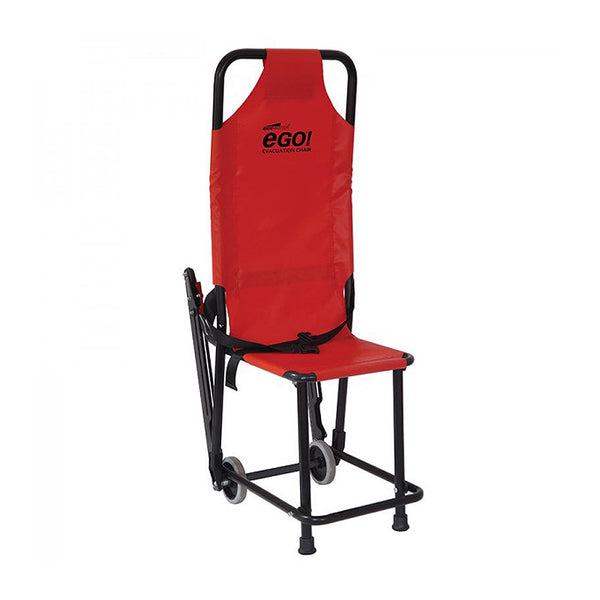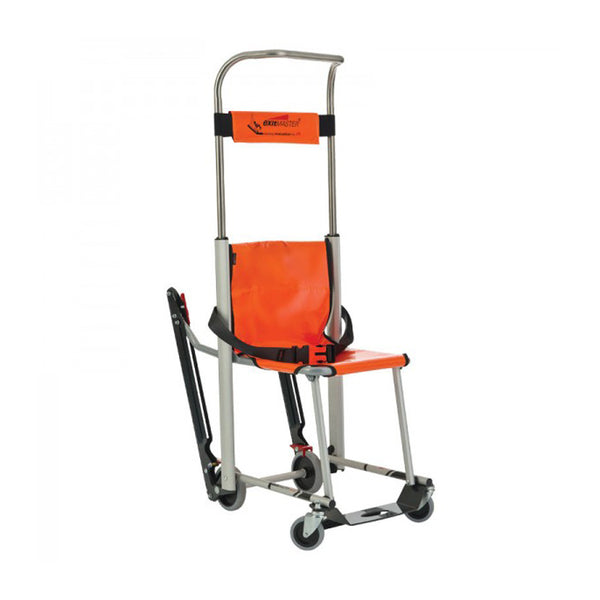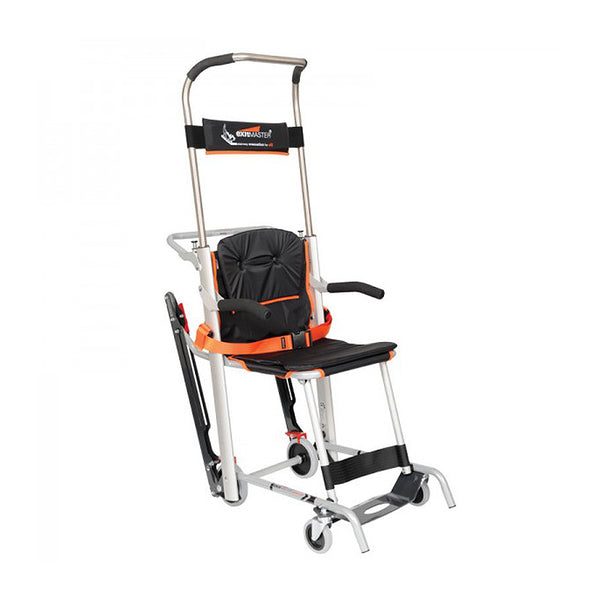Evacuation chairs are a vital tool for helping to evacuate everyone from your building in an emergency. Fire and Safety Centre offers advice about evacuation chair legislation, what that means for your company, why you might need at least one and who should use it.
Many years ago a colleague was taken ill at work. He staggered into the office ashen-faced, glistening with sweat and clutching at furniture for support, but protesting that he would be OK in a minute.
We listened to his protestations, and took him at his word. As it happened, he was indeed OK very quickly. But the incident played on my mind, and that afternoon I instigated an office rule: if someone appeared to be ill, no matter what the protests, medical help would be called at once.
What had driven my thinking was that if he hadn’t been OK, I would have had to explain to his wife, or worse still to his widow, that I could have intervened, but didn’t.
The story came to mind recently when I was talking to a client about evacuation chairs. He was saying he couldn’t see the need to invest in evacuation chairs, since no-one who worked for him was disabled, and disabled visitors weren’t allowed onto the top two floors of his three-storey building anyway.
He said he could therefore never envisage circumstances when he or his staff might have a need for any emergency evacuation device. His comments took my breath away, because what he said was wrong on so many levels – and he was putting himself in a very similar position to the one I’d been in when faced with a sick colleague.
What is an evacuation chair?
It’s a means of getting someone who isn’t very mobile out of a building quickly in an emergency. These devices have been around since the 1980s, and, as you’d expect, have evolved over that time. We describe what’s now available here.

What legislation covers evacuation chairs?
To start with, let’s look at the Regulatory Reform (Fire Safety) Order 2005, which steers us in the right direction in every fire-related area. Although it offers advice about fire prevention to the legally-nominated ‘responsible person’ (and if you’ve read this far, that could well be you), crucially it also gives you a responsibility to make sure everyone in the building – visitors and employees alike – can get out safely in an emergency. The key words in that sentence are ‘you’, ‘responsibility’ and ‘everyone’. And that might make you think about disability in a different way. Did you know, for example, that there are about 7.6 million disabled people in the UK today? That’s getting on for one in eight, but doesn’t necessarily count those on crutches because of injury, someone who suffers a heart attack when an emergency happens, or someone who’s pregnant.
You might not see any of those as a disability, but the individuals concerned might nevertheless need help when it comes to evacuation!
If you have stairs, and they’re to be part of your escape route, you need to consider anyone who may have difficulty in negotiating them. Under the Fire Safety Order, you have a duty to secure that the means of escape can be used safely and effectively (It’s in Article 4(1)(c)). If anyone in the building is unable to use the stairs or escape route without an evacuation chair, on which they can be slid down the stairs in a safe, controlled and efficient manner, you should make sure one is available so they can get out safely. You may also decide that one evac chair is not enough; it is not advisable to rely on being able to return it to the building during an evacuation to assist more than one individual.
Disability legislation and evacuation chairs
Then there’s disability legislation, which may well have a bearing on your need to have an evacuation chair – or several evac chairs – on the premises. If you plan to ‘sidestep’ buying because you intend to stop people with a disability from using areas of the building accessed by stairs, or saying that higher floors are out of bounds for safety reasons, you could put yourself or your company at risk a discrimination claim under the Disability Discrimination Act 1995 and/or the Equality Act 2010. A company is expected to make ‘reasonable adjustments’, which will be different depending on the size of the company.
However, your failure to have evacuation chairs could be seen as a failure to make reasonable adjustments for the disabled, who have a right in law to be able to reach all parts of a building. There is more information about evacuation chair legislation on our advice pages.
The importance of evacuation chair training
Article 21 of the Fire Safety Order makes plain your duty to be certain your staff have adequate safety training. That training has to include what the employee must do to safeguard themself and others on the premises – including the safe use of emergency evacuation devices. The most cost-effective way is to consider training someone who can pass that knowledge on to others in the business, making certain that there is always someone in the building who knows how to use an evacuation chair. Viewing the full range of our emergency evacuation devices will illustrate just how important the training aspect will always be.
And remember where this blog started. Our building wasn’t on fire, but the office was on the first floor. We all need to be ready for the unexpected; morally and legally. I hope you never find yourself in the position of having to tell someone their loved one died because you hadn’t prepared for any eventuality – including failure to buy a simple but effective evacuation chair, and training someone to use it –which could have saved their life.




